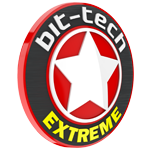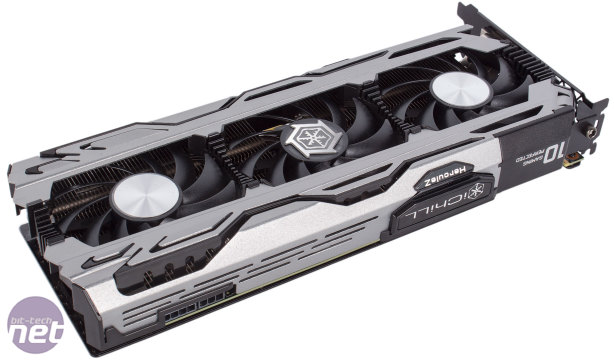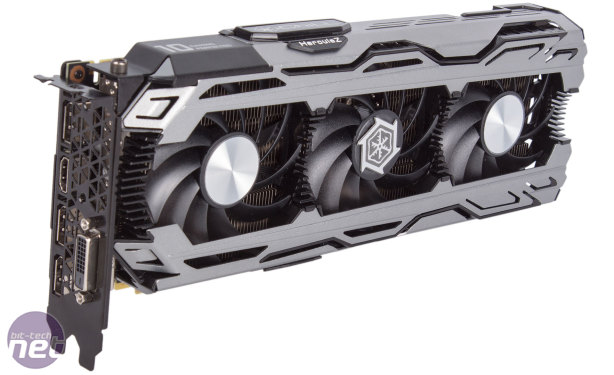Performance Analysis
Performance is of course very impressive with this card. A bit of minimum frame rate variation means it doesn't top the charts in every single test, but on average it's the fastest GTX 1080, and the fastest card generally, we've tested so far. Admittedly, it only tends to be 2-3 percent quicker than the other GTX 1080s we've tested, but Inno3D is clearly pushing the GTX 1080 GPU and the GDDR5X memory harder than most and should be commended for that. The card is also 25 percent faster on average than an overclocked GTX 1070 and over a third faster than a Radeon R9 Fury X.The GTX 1080 iChill X3 makes light work of 1440p gaming, with smooth frame rates in every test and minimums that regularly exceed 60fps in both DX11 and DX12 titles. 4K is still a challenge for single GPUs, but this card still manages minimum frame rates of between 40 and 50fps in four of our six games, but drops to 27fps in Fallout 4 and 23fps in The Division, signalling that ultra settings in some games will still be too much with this many pixels to deal with.
The power consumption is higher than the other GTX 1080s we've seen – Inno3D rates this as a 230W TDP product compared to 180W on the reference design. Then again, this is a faster card and it also has to power three fans. The system consumption of 410W is roughly in line with that seen when using a reference GTX 980 Ti, a card that it is nearly 40 percent faster than on average.
The temperature is also a little higher than the other GTX 1080 cards we tested. We ran our benchmarks on an especially warm day, and the core crept up to 82°C. This is a little higher than we tend to like, but it's still perfectly safe. Inno3D uses a non-aggressive fan profile that targets low noise instead of the absolute lowest temperatures. In fact, under load its fans reached around 1,450 RPM, which seems low but is actually 94 percent of their maximum according to GPU-Z. At this speed, the fans are audible but still on the quiet side and far from distracting. Even when we manually set the fans to 100 percent they weren't a nuisance, so excess noise will never be an issue with this card. That said, on warm summer days or in poorly ventilated cases, clock speeds may suffer slightly if the slow spinning fans aren't able to dispel enough heat. Even so, we appreciate a focus on low noise, which the large heatsink certainly helps with.
We also noted that the fans here take a longer time than most to shut off – the two side fans tend to stop first, but the middle one keeps spinning down to very low speeds (e.g. sub-200 RPM) until the GPU is below 45°C or so.
Our small overclocks improved performance by between two and six percent. This may not seem like a lot, but given how fast the card was already running it's still pretty impressive – the in-game boost clock of 2,075MHz when overclocked is really quite something. It seems that to get a consistent 2,100MHz or more you'll need either great luck in the silicon lottery, some voltage modding, water-cooling or a combination of the three.
Conclusion
Inno3D's take on the GTX 1080 here is, by and large, very respectable. You get one of the best overclocks available out of the box, and we really like that the company has given the memory a respectable bump in speed too. The result of this is frequently chart-topping performance. With its metal backplate and cooler shroud, the build quality is also high, and the semi-passive cooler is capable of taming the GPU at decent noise levels, and also takes care of the memory chips and power circuitry.Downsides are few and far between – there are no special upgraded power circuitry components akin to Asus's Super Alloy Power II circuitry, for example, but in fairness that doesn't seem to hamper the card's overclocking potential. It's also extremely long, limiting the cases in which it can be used, and its 2.5-slot design means it may limit your expansion card options as well.
While £660 is an absurd amount to pay for a graphics card for most people, if you've already decided that you're in the market for a GTX 1080, this iChill X3 edition is quite fairly priced compared to much of the competition and well deserving of your attention.


MSI MPG Velox 100R Chassis Review
October 14 2021 | 15:04












Want to comment? Please log in.